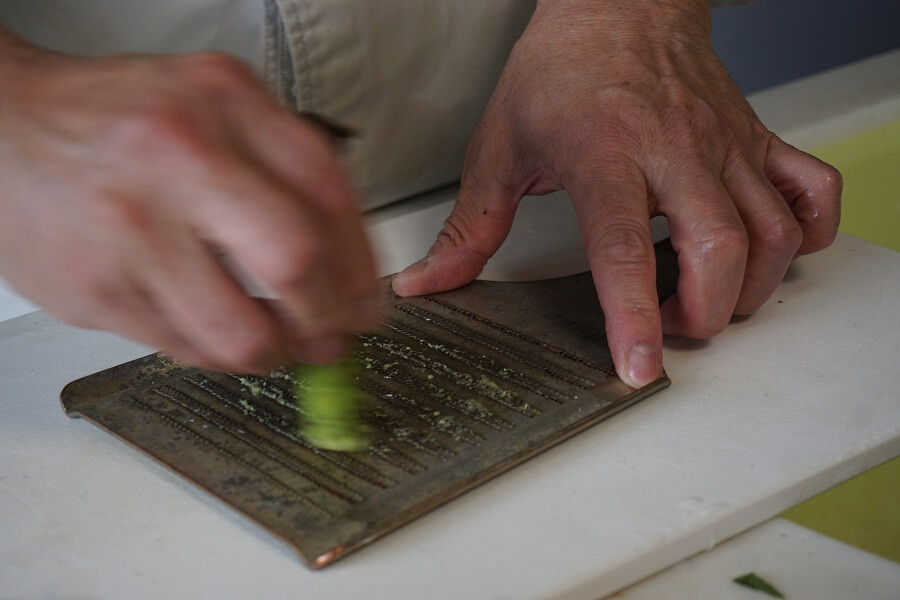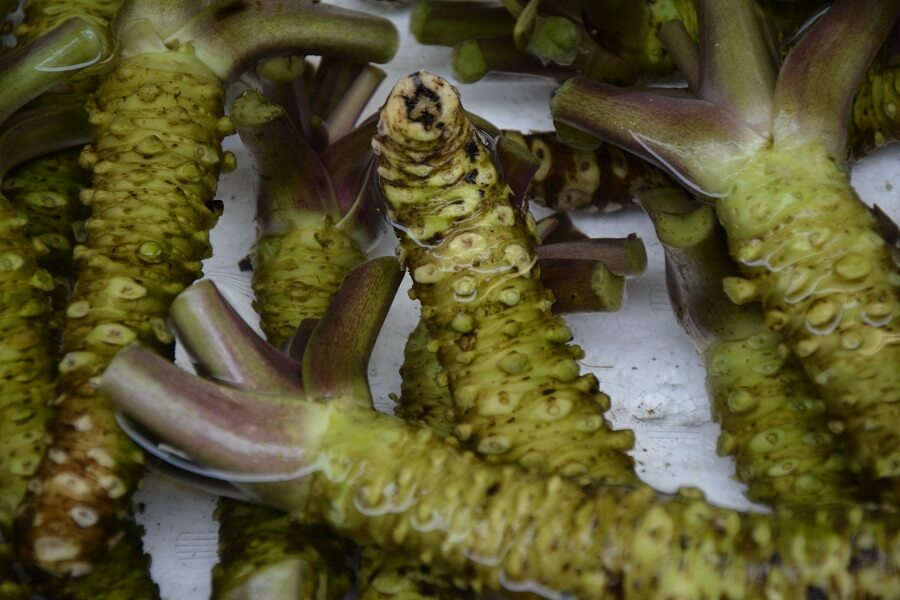All About Wasabi
Understanding Spices
Your cart is empty.
SUBTOTAL
£0.00

Understanding Spices
Wasabi is from the plant family Brassicaceae also referred to as Japanese horseradish plant. Fresh wasabi rhizome can be grated and ground to form a paste and eaten after allowing the flavours to develop which takes approximately 5 minutes. This fresh paste needs to be eaten and used relatively quickly as the flavour is lost after about 15-20 minutes. If fresh wasabi isn’t available, the other option is to use a ground wasabi which needs to be mixed with water to form a paste. Wasabi is typically used as a condiment for sushi and sashimi. Wasabi has a pungent smell and is similar in taste to hot mustard or horseradish in that it can get up your nose with its heat.
Real wasabi is very expensive as it’s hard to grow. The plant grows along stream beds in mountain river valleys in Japan, which isn’t a common farming structure. Small changes in its environment or humidity can even kill the plant. As wasabi isn’t mass cultivated, it’s very difficult to find fresh wasabi in the West and keep fresh.
Most of the wasabi found in supermarkets is made from a blend of ingredients including western horseradish plant, mixed with mustard powder, thickening agents and artificial colouring. It’s better to buy wasabi in its powdered form as you can make a little as and when needed.
The easiest way to tell ‘real’ and ‘fake’ wasabi apart is by taking a look at the texture. Imitation wasabi has a pasty and thick consistency, whereas real wasabi has a grittier and grated texture and natural wasabi isn’t luminous green!

Wasabi is an essential ingredient in Japanese cooking and is traditionally served as a condiment to all forms of sushi. In some high-end restaurants, wasabi paste is prepared when the customer orders. The stem is grated with a metal grater, although traditionally, the root is run over dried sharkskin. Once the paste is prepared, it loses flavour within 15 minutes if it’s left uncovered—so when preparing sushi, the chef usually places the wasabi between the rice and the fish to preserve the flavour.
However, wasabi’s use isn’t limited to sushi. You can use this paste to flavour mayonnaise and sauces, add it to salad dressings or marinades for fish and meat. You’ll even find some artisan ice cream shops that serve wasabi flavoured ice cream!
Take a look at these recipes which use wasabi:
One teaspoon of horseradish-based wasabi paste contains:
Wasabi also contains slight amounts of iron, magnesium, phosphorus and potassium. Getting enough iron in your diet is important as it lowers your risk of anemia. Potassium is also essential, as diets rich in potassium have a positive impact on blood pressure.
Isothiocyanates (ITCs) are the compounds in wasabi responsible for its pungent flavour. These compounds also provide several health benefits:
Wasabi extract has antibacterial effects against E. coli and S. aureus, which are two of the most common bacteria that cause food poisoning. It also protects against the bacteria H. pylori, a bacterium that infects the stomach and small intestine and the main cause of peptic ulcers.
There is research which suggests that the leaves of the wasabi plant contain compounds that can prevent the growth of fat cells. The compounds can ‘turn off’ a gene responsible for the formation of fat cells.
One study has found that the ITCs in wasabi prevent the formation of acrylamide by 90%. Acrylamide is a chemical that forms in certain foods such as French fries, crisps and coffee during high-heat cooking processes. Studies have associated ingesting acrylamide with certain cancers like kidney, endometrial and ovarian cancers.

Understanding Spices
Spices have long been integral to the UK's culinary landscape, adding depth, flavours, and richness to a myriad of dishes. From the pungent aroma of cumin in Indian curries to...
Read MoreUnderstanding Spices
Confetti is an essential part of any wedding day. Not only is it a wonderful way to greet a newlywed couple, but it also provides some beautiful photo opportunities. The...
Read MoreSeasonal Ideas
It’s no secret that any handmade gift will always be more special than a store-bought one. Homemade food gifts are especially wonderful, a labour of love that shows someone you...
Read MoreHealth and Wellbeing
It’s no secret that winter’s cold and gloomy weather makes us crave indulgent dishes like fondue and baked goods like sticky toffee pudding and apple crumble. While Christmas is the...
Read More